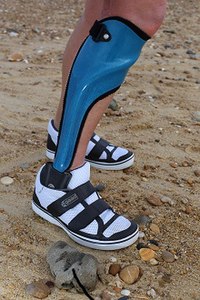
Photo from wikipedia
Abstract Two alternative braced frame configurations are examined to improve the vertical distribution of seismic storey drifts and inelastic demands in multi-storey steel eccentrically braced frames (EBFs): the tied braced… Click to show full abstract
Abstract Two alternative braced frame configurations are examined to improve the vertical distribution of seismic storey drifts and inelastic demands in multi-storey steel eccentrically braced frames (EBFs): the tied braced frame (TBF) system and a modular tied-braced frame (M-TBF) system. In TBFs, the concentration of inelastic deformation is prevented by connecting all ductile links over the frame height with vertical tie members. In the M-TBF configuration, the ties are interrupted at one or more locations along the frame height to reduce member forces while achieving the same objective as the TBF. The performance of each bracing system is investigated through nonlinear response history analysis for 8-, 16-, and 24-storey prototype building structures. For the 16-storey building, two M-TBF configurations are examined, two 8-storey modules and four 4-storey modules, to investigate the influence of this parameter. The analysis results show that the TBFs exhibited smaller and more uniform storey drifts and residual drifts at the expense of high axial force demands in the tie members. Soft-storey response could also be mitigated with M-TBFs, but member forces diminished significantly when adopting a modular tied braced frame configuration, which led to a reduction in the required steel tonnage with limited increases in peak and residual drift demands. Performance assessment using incremental dynamic analysis showed that the 16-storey EBF could not pass the FEMA P695 collapse safety criteria whereas all tied braced frames could exhibit satisfactory performance.
Journal Title: Journal of Constructional Steel Research
Year Published: 2019
Link to full text (if available)
Share on Social Media: Sign Up to like & get
recommendations!